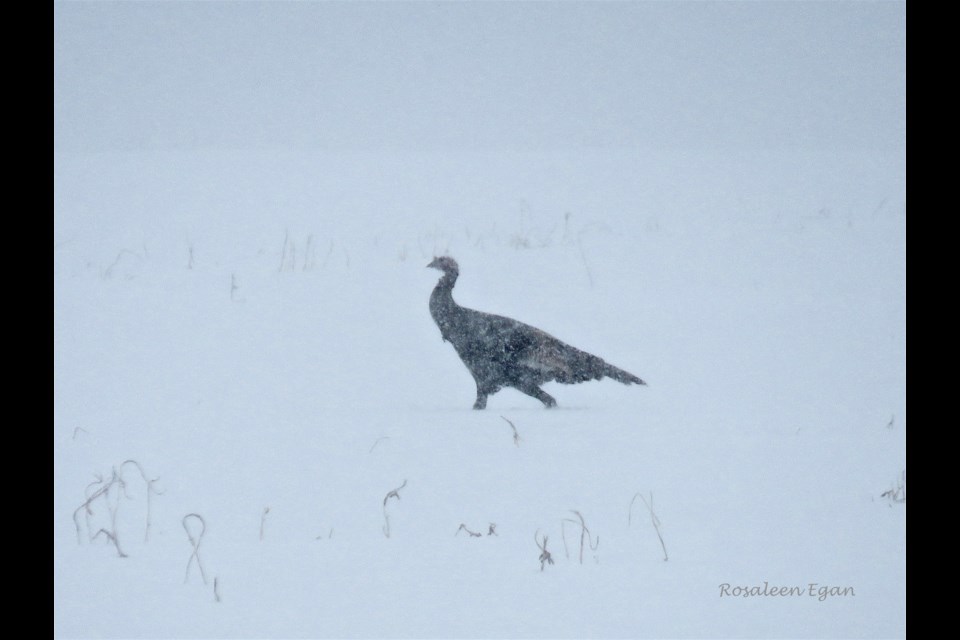A walk in heavy snow can be a beautiful thing. One such walk brought an encounter with wild turkeys in the soy/hay field beyond my house. The turkeys were a distance away, and I had not brought my camera.
I walked back home to get it and the first thing I saw on my return to the field was the lone turkey in the first photo. As I tried to get across the deep snow, I wished I had snow shoes. Looking at the turkey, I thought it must feel the same way.
I didn’t want to stress it or the others further afield, with my approach, so
photos are not very clear due distance, the snow and it was late in the day. I almost didn’t write this because of it. I do, nevertheless, rather think there is something stoic in the turkey’s strut that’s worth sharing. They are rather remarkable birds as I’ve discovered.
In researching this, I read turkeys do indeed have a hard time walking in soft deep snow making my assumption, the lone one in the photo wished it had snow shoes, more credible. Once the snow is crusted it is much easier to walk but the snow still covers food sources.
Allaboutbirds.org says, “When deep snow covers the ground, they eat hemlock buds, evergreen ferns, spore-covered fronds of sensitive ferns, club mosses, and burdock.”
The Canadian Encyclopedia adds, “Wild turkeys are opportunistic foragers and eat a variety of items such as nuts, fruits, seeds from grasses and sedges, insects, snails, frogs, salamanders and crayfish.”
Interestingly, the encyclopedia says there are two subspecies of wild turkeys in Canada. “The Eastern wild turkey is native to southern Ontario and Quebec, while Merriam’s wild turkey was introduced to Manitoba in 1958 and to Alberta in 1962.” Merriam’s wild turkey is also now found in southern British Columbia and Saskatchewan.
The loss of habitat when forests were cleared for settlers, and massive hunting led to the extirpation of Eastern wild turkey in Canada by 1909.
Reintroduction attempts began in Ontario in 1984. This has included trapping wild turkeys and moving them to other suitable natural areas to expand their range. These efforts have been wildly successful and turkeys are now plentiful. They live year-round in open forests.
Allaboutbirds.org says, “At sundown turkeys fly into the lower limbs of trees and move upward from limb to limb to a high roost spot.”
It’s fairly common now to see turkeys foraging on the ground in fields for left over grain, such as the ones I saw. It may be surprising to know they can run up to 40 km/h and fly at bursts of up to 80 km/h.
What creates a rather bizarre image in my mind is reading on the allaboutbirds.org site the following: “When they need to, turkeys can swim by tucking their wings in close, spreading their tails, and kicking.”
This leaves no doubt in my mind that they can also snowshoe.
I share experiences of bird visitors to this property with readers every couple of weeks. Until next time, keep your eye to the sky, and look for birds that may come by.
Rosaleen Egan is a freelance journalist, a storyteller, and a playwright. She blogs on her website rosiewrites.com.



